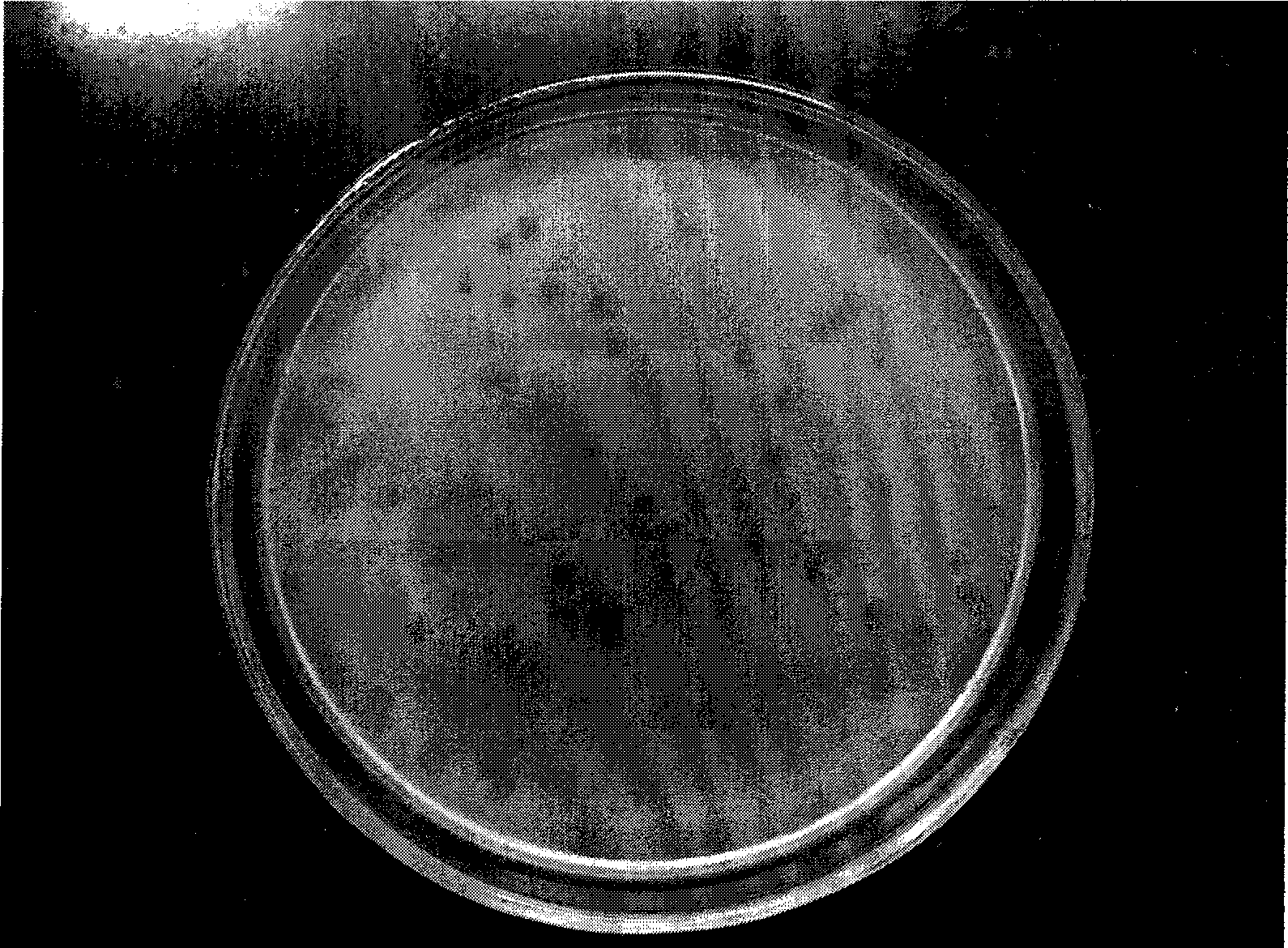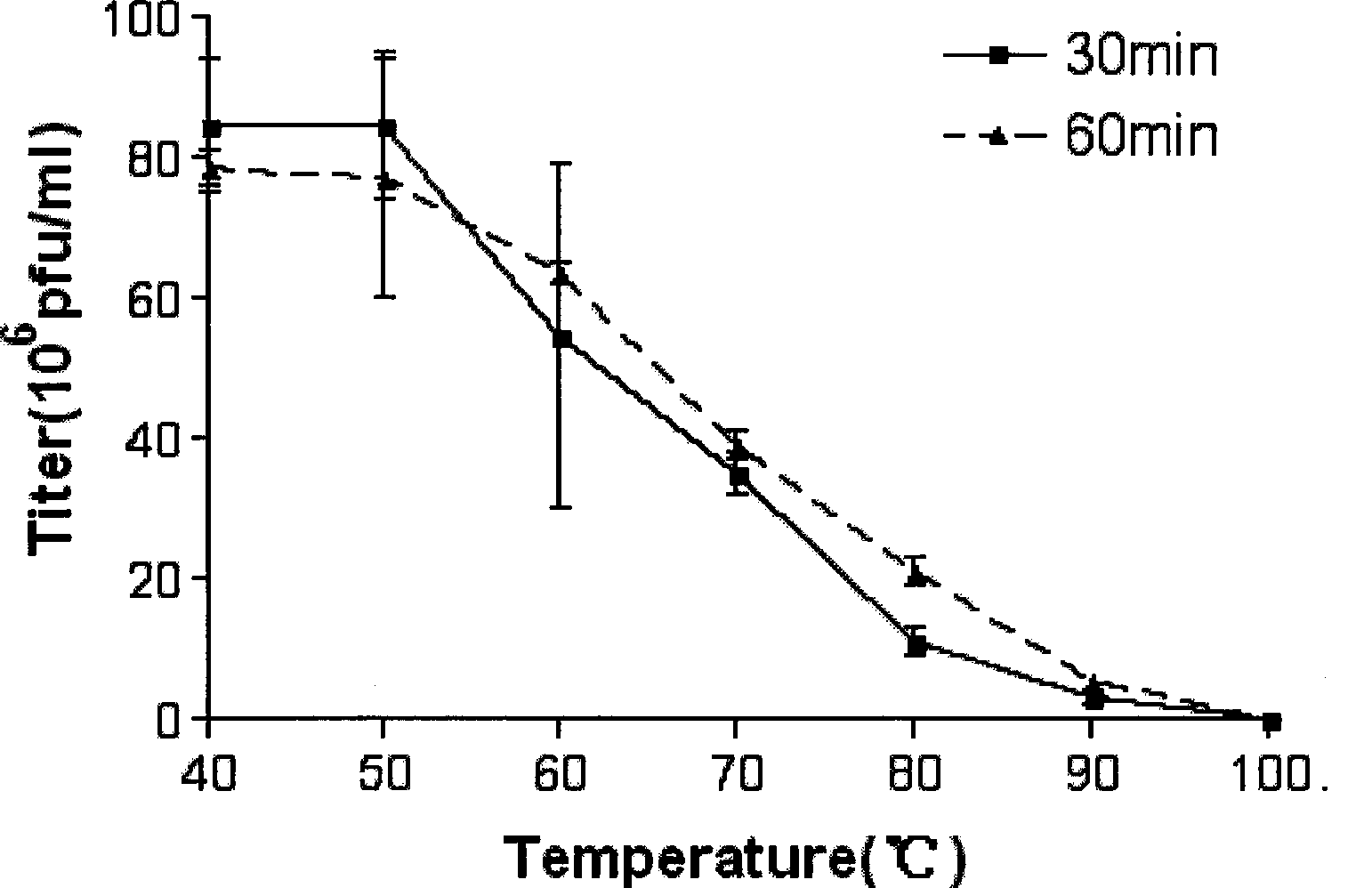Shigella flexneri phage strain and application thereof
A technology of Shigella flexneri and bacteriophage, applied in the field of bioengineering, can solve problems such as the evolution of bacteria and achieve the effect of preventing pollution
- Summary
- Abstract
- Description
- Claims
- Application Information
AI Technical Summary
Problems solved by technology
Method used
Image
Examples
Embodiment 1
[0023] Embodiment 1, the separation and preparation of phage
[0024] The sample of the present invention is collected from the sewage of the cleaning site of the pig breeding factory of Jiangsu Academy of Agricultural Sciences, filtered through double-layer filter paper, 3000 × g.min -1 Centrifuge for 20 min, and then filter the supernatant with a 0.22 μm filter membrane.
[0025] Take 50ml of filtered supernatant, add 2ml of overnight culture of phage host bacteria, and then add CaCl 2 After mixing the mother solution (sterilized by a 0.22 μm filter membrane) to a final concentration of 1 mM, add 20 ml of LB medium, incubate at room temperature for 1 h, and then place it at 37 ° C for 12 to 16 h. The next day, take the above-mentioned culture and wash it at 14000×g.min -1 Centrifuge for 30min, take the supernatant; 14000×g.min -1 Centrifuge again for 20 min, take the supernatant and add 0.1% chloroform to form a phage stock solution.
[0026] Divide the ordinary nutrient...
Embodiment 2
[0028] Embodiment 2, purification culture and amplification of bacteriophage
[0029] Pick a single phage plaque with the same shape and size on the double-layer plate forming the phage plaque, puncture the target phage plaque with an inoculation needle, insert the inoculation needle into 3-5ml LB medium after puncture, and repeat 3-5 times After that, add 0.1ml of phage host bacterial solution, mix well, act at room temperature for 15min, incubate at 37°C for 10-14h, 14000×g.min -1 , 4°C, centrifuge for 20min, take the supernatant, add 0.1ml chloroform at the same time, react at room temperature for 20min, sterile filter (0.22μm) the supernatant;
[0030] Take 2ml of freshly cultured host bacteria, centrifuge, resuspend in 0.4ml LB medium, add 0.1ml phage (the ratio of single phage culture to host bacteria is 1:1, 1:10 and 1:100, respectively). Add maltose (0.2%), MgSO 4 (10mM), incubate at 37°C for 20min to make the phage particles adsorb to the host bacteria; add 100ml LB...
Embodiment 3
[0033] Embodiment 3, the influence of temperature and pH on the stability of bacteriophage Sh72
[0034] Take 0.1ml 1×10 respectively 8 Pfu / ml of purified phage was reacted in a water bath at 40°C to 90°C for 30min and 1h, and the titer was measured after the sample was cooled in an ice bath; peptone water and 2×10 9Pfu / ml purified phages were mixed in equal amounts, and the potency was measured after 2 hours in a water bath at 37°C.
[0035] The results show that if figure 2 As shown, after the phage was treated at 40°C and 50°C for 30 minutes, its activity did not change significantly; at 50°C for 1 hour, the activity decreased; after the action at 70°C, the titer decreased to less than 50% of the initial titer; at 90°C , almost inactivated.
[0036] The results after the phage were treated with different pH image 3 , the titers of phages were all at 10 after pH5.0~9.0 9 Above, its activity has no obvious change; when the pH is 4.0 and 10.0, its titer drops to 5×10 8...
PUM
 Login to View More
Login to View More Abstract
Description
Claims
Application Information
 Login to View More
Login to View More - R&D
- Intellectual Property
- Life Sciences
- Materials
- Tech Scout
- Unparalleled Data Quality
- Higher Quality Content
- 60% Fewer Hallucinations
Browse by: Latest US Patents, China's latest patents, Technical Efficacy Thesaurus, Application Domain, Technology Topic, Popular Technical Reports.
© 2025 PatSnap. All rights reserved.Legal|Privacy policy|Modern Slavery Act Transparency Statement|Sitemap|About US| Contact US: help@patsnap.com



